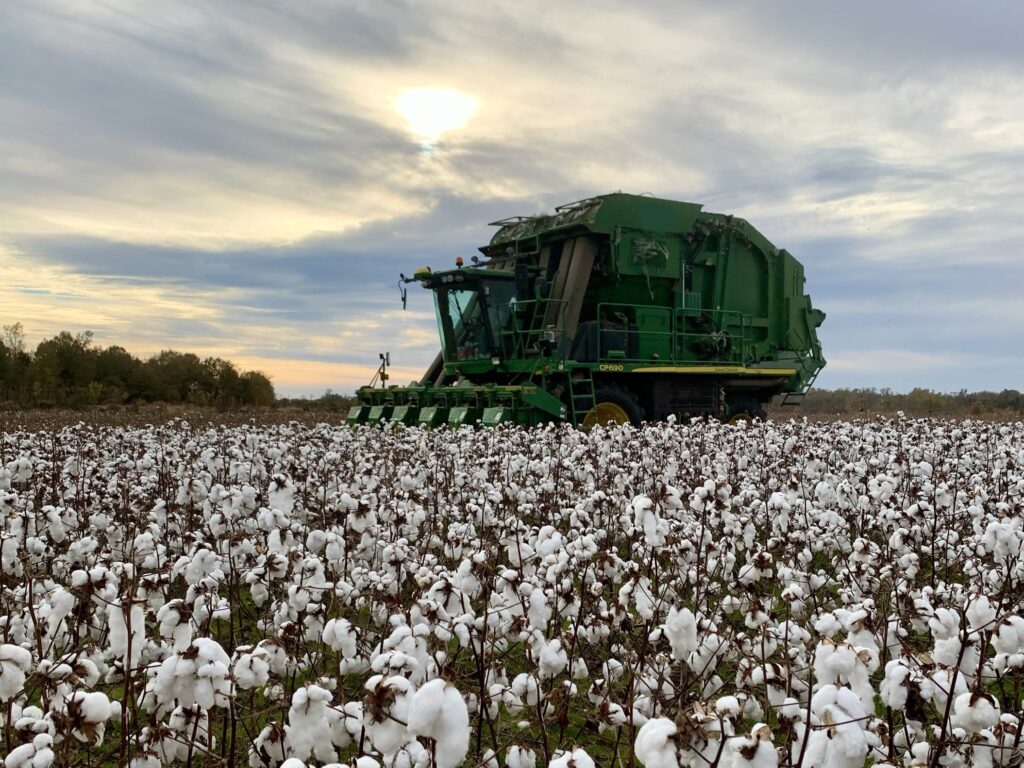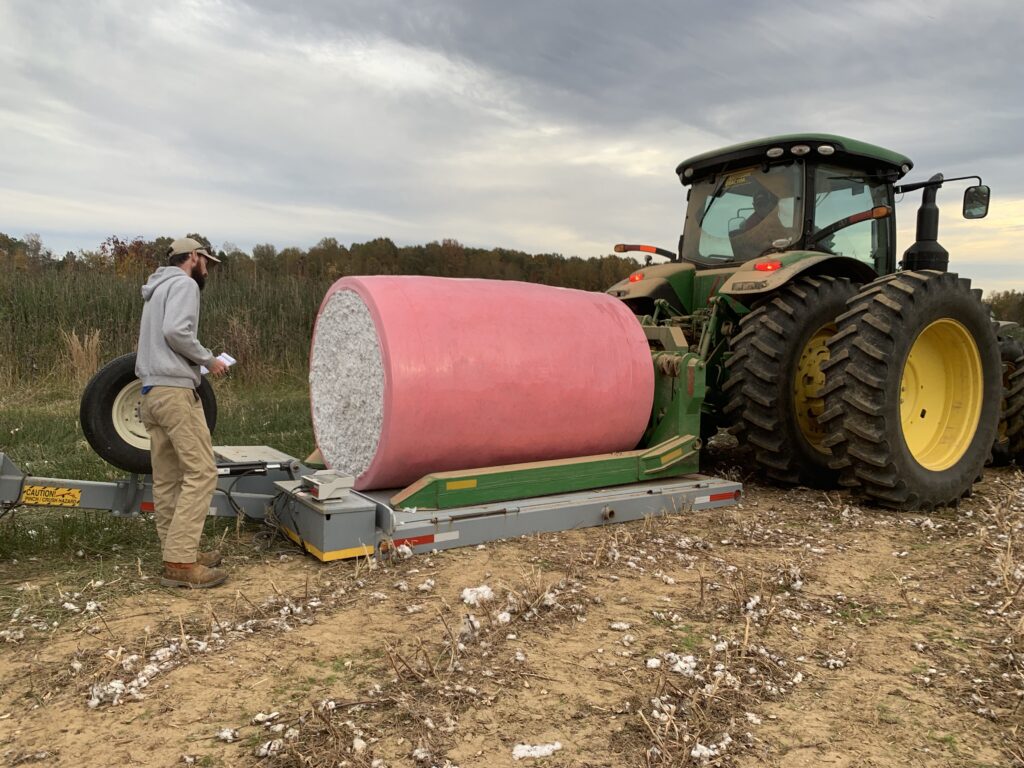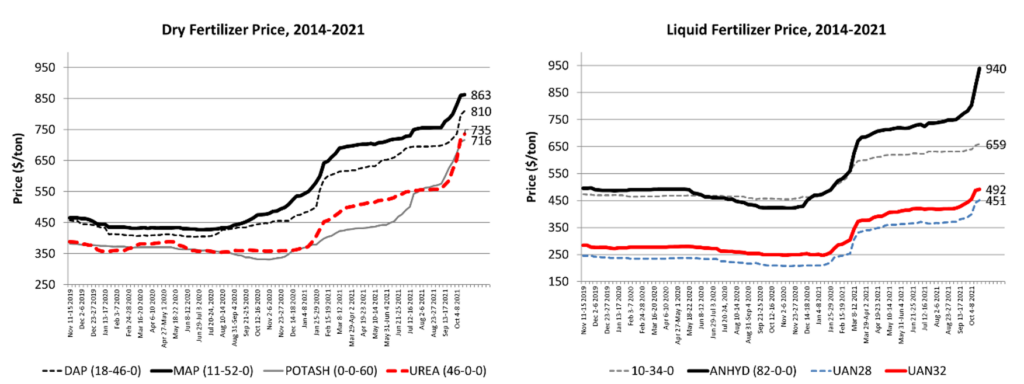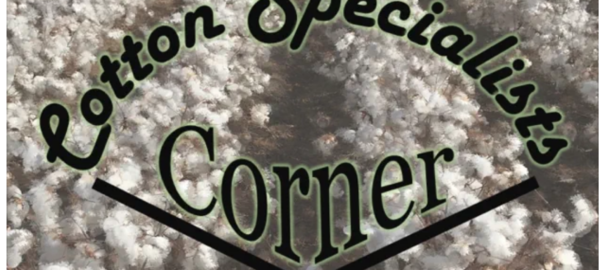 The 2021 Tennessee Cotton Variety Trial Results Publication (PB 1742) is now available online. Included within these results are ten large strip trials (CSTs) testing 15 XtendFlex commercial varieties, three large strip trials (CSTs) testing 5 Enlist commercial varieties, and six small plot trials (OVTs) testing 41 experimental and commercial varieties.
The 2021 Tennessee Cotton Variety Trial Results Publication (PB 1742) is now available online. Included within these results are ten large strip trials (CSTs) testing 15 XtendFlex commercial varieties, three large strip trials (CSTs) testing 5 Enlist commercial varieties, and six small plot trials (OVTs) testing 41 experimental and commercial varieties.  Special thanks to all of the agents and producers who helped generate this data. Additionally, thanks to the USDA Classing Office in Memphis for assisting with this effort. If you have any questions on location response or variety placement, please do not hesitate to reach out directly to your county agent.
Special thanks to all of the agents and producers who helped generate this data. Additionally, thanks to the USDA Classing Office in Memphis for assisting with this effort. If you have any questions on location response or variety placement, please do not hesitate to reach out directly to your county agent.
All posts by Tyson Raper, Cotton & Small Grains Specialist
2021 Tennessee Official Variety Trial Results now available
The 2021 Tennessee Official Variety Trial (OVT) Results are now available online. By clicking the image above or the pdf below, you will be directed to trial information, an overall OVT average table, and individual average tables for five of the 2021 OVTs. Continue reading
Preliminary 2021 Cotton CST Data
 Preliminary data from the 2021 TN Cotton CSTs is now available. We are releasing an average table for the XtendFlex trials and the Enlist trials today and hope to release the quality and individual location results in the near future. Keep in mind the XtendFlex and Enlist trials are conducted separately, so direct comparisons between tables cannot be made from this dataset. Also, stay tuned for the OVT small plot trial data average table which includes 41 commercial and pre-commercial varieties. Continue reading
Preliminary data from the 2021 TN Cotton CSTs is now available. We are releasing an average table for the XtendFlex trials and the Enlist trials today and hope to release the quality and individual location results in the near future. Keep in mind the XtendFlex and Enlist trials are conducted separately, so direct comparisons between tables cannot be made from this dataset. Also, stay tuned for the OVT small plot trial data average table which includes 41 commercial and pre-commercial varieties. Continue reading
Dr. Seth Byrd: Cotton Outlook after a Freeze Event
Calls concerning our forecast have been steady. In order to get some insight into how to handle closed bolls some have remaining in the upper canopy prior to a freeze, I reached out to Dr. Seth Byrd in Oklahoma. Dr. Byrd has served in both Texas and Oklahoma and has years of experience tackling this issue when an impending freeze event is in the forecast. His comments are below. Special thanks to Dr. Byrd for this contribution! Continue reading
Managing Input Price Risk
Posted by Tyson Raper on behalf of the author, Dr. Aaron Smith

It’s a challenging time for crop producers to manage input price risk. Input prices for fertilizer, crop protection (chemicals), machinery, fuel, labor, rent, and insurance are up substantially compared to last year at this time. Additionally, availability and timeliness of delivery are a major concern. Fertilizer prices highlight this dramatic increase in the cost of production (graphs above). Most common fertilizers have more than doubled compared to last year. As such, producers are seeking strategies to reduce input costs. Two recommendations, as a starting point, are soil sampling (know what you’ve got) and crop selection (know current relative cost and revenue relationships for commodities produced on your farm). Unfortunately, there is no “silver bullet” to mitigate rising input costs and availability concerns. So, producers will need to be creative in their approach and consider numerous strategies. Continue reading
Harvest aid concoctions moving into the first full week of Oct
Rainfall pushed us out of the field today and it looks like we may not get back to spraying until early next week; it is generally best to not apply harvest aids in front of a guaranteed rain. In this blog, I cover defoliation concoctions as we move into cooler temperatures next week. Continue reading

Cotton Specialists’ Corner: Conversations on Harvest Aids
The Extension Cotton Specialist Working Group, under the leadership of Dr. Seth Byrd, began a podcast earlier this year discussing management decisions and topics important to the industry. In the past two weeks, two episodes have been released which cover harvest aids; the first includes comments from Steve Brown (AL), Camp Hand (GA), and Bill Robertson (TX) discussing methods for scheduling harvest aid applications and application strategies to optimize harvest aid performance; the second includes Guy Collins (NC), Matt Foster (LA), and Tyler Sandlin (North AL) discussing various harvest aid products, tanks mixes, and how to address late season crop issues through harvest aid product and rate selection. These podcasts contain excellent content which will be extremely timely as we move into the next few weeks. Continue reading
Defoliation trial results, thoughts, and concoctions for the next few days
I dug through my closet to get a jacket this morning. With cooler temps creeping into the forecast, calls on defoliation timing, products and rates have really picked up. In this blog, I highlight results from the earliest defoliation strip trial we’ve applied in 2021, share a few concoctions that I’ll be running on the earliest cotton here in Jackson next week, circle back on boll maturity and give a couple of additional thoughts on what we will likely face in the coming weeks.

